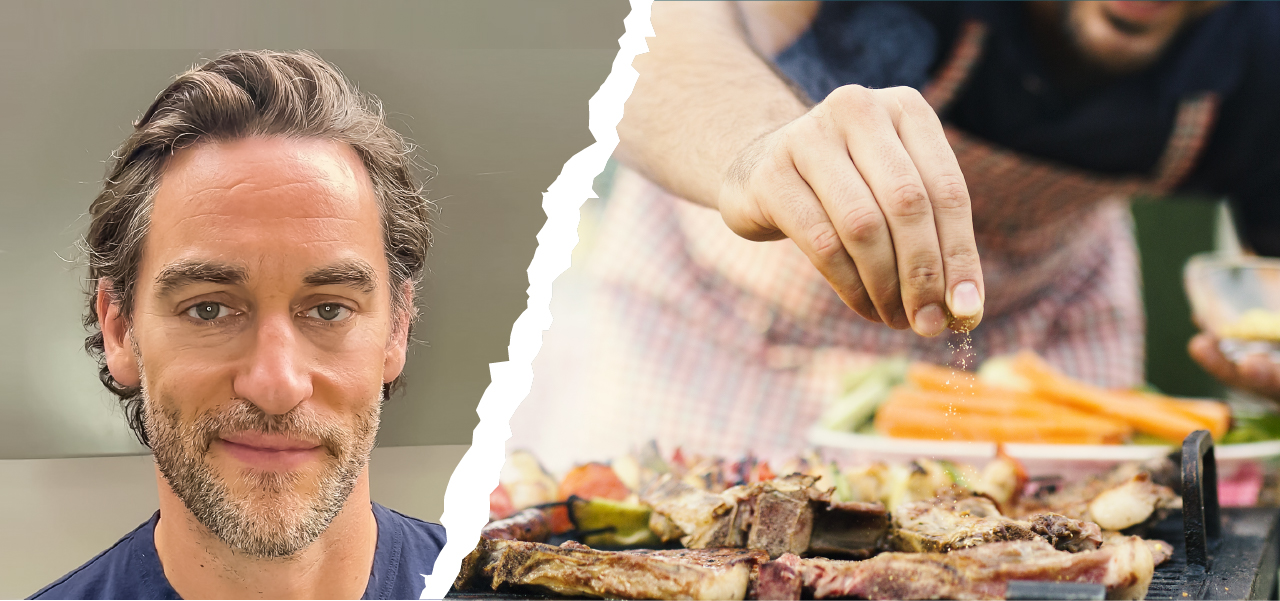20 June 2023

Seasoning Food with Sense
Many cuisines around the world use salt to help enhance the flavour of their food. However, salt contains sodium. Although sodium is an essential mineral that the body requires to help maintain fluid balance, too much can increase the risk of high blood pressure, which is a risk factor for heart disease and stroke. Recognising that salt is our biggest source of sodium, the UK has recommended a maximum limit of 6g salt/day.
To help you to stay within the recommended 6g of salt a day, you can add flavour to foods using other methods and ingredients.
Sea salt
This alternative to table salt was made famous by celebrity chefs as a more natural alternative. It is minimally processed and contains small amounts of other minerals, including potassium, magnesium, and calcium. The flavour is more intense than table salt, which means you may use less of it, but the sodium levels will be the same as table salt. Proponents of sea salt often talk about the additional minerals. Still, these are insignificant given the small amounts used to flavour food.
Himalayan Salt
This alternative to salt is often adopted by wellness warriors as a healthier alternative to salt. Mined in the Himalayan mountains, this pink variety contains small amounts of potassium, magnesium, and calcium. The taste is milder than table salt and is often considered lower in sodium, but levels are still like table salt. Much like sea salt, this variety is often touted for its additional mineral content. Still, this is of little significance given the amount needed to get any reasonable amount of these.
Reduced sodium salt alternatives or ‘potassium-enriched salts’
Products such as LoSalt contains less sodium than regular salt and with no sacrifice on flavour and can be used to season a whole host of dishes. LoSalt is made by blending sodium chloride (i.e. regular salt) and potassium chloride – a key mineral that the body relies on heavily to function properly. In fact, increasing potassium intake is recommended to reduce blood pressure and risk of cardiovascular disease, stroke and coronary heart disease in adults.
So, switching from seasoning food with regular table, sea and rock salts, to LoSalt, not only adds great flavour and helps moderate your sodium intake, but also helps increase your potassium intake too!
Mixed dried herb blends
Dried herbs are another great way to add flavour to food. Herbs also offer taste versatility and some, such as rosemary, thyme and oregano are often combined in herb mixes. Watch out for any blends combined with salt and instead make your own, using your favourite dried herbs. Dried spices can also be used to season food, but again, watch out for salt added to mixed spice blends.
Umami
Making the most of umami is an excellent way to reduce salt intake. Many foods rich in umami are high in sodium, but some vegetables make good low-sodium alternatives. Try making stocks of dried mushrooms, as these are among the most flavoursome umami foods. Tomatoes can also add richness and flavour to dishes. Try adding tomato paste to dishes or particularly flavoursome cherry tomatoes. Be sure to cook them down for a while to intensify the richness and savoury flavour.
Reducing your sodium intake can significantly affect your health, but that doesn’t mean you have to sacrifice flavour. There are plenty of options you can explore and combine to create meals rich in flavour but low in sodium.
